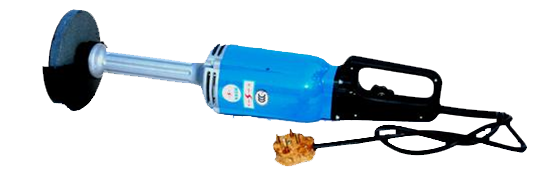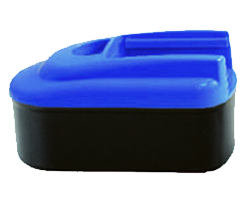Tools Introduction Class
Tools Feature & Advantage Introduction Class
Tools Operation and Application Class
Tools Maintanence and Repair Class
Tools Quality Checking and Certified Class
Tools Torque Introduction
Marketing Service Area
Member post
Types of Electrical Tools
Popularity : 21400Types of Power Tools
According to the power source, power tools can be seperated into plug-in style and and strorage style.
On the other hand, power tools can also be divided into three types following their usage, which are Grinding, Assembling and Metal Grinding type.
Metal Cutting Power Tools
Usage:
Using circular saw blades or jigsaw saw blades to operate cutting on metal materials such as iron, aluminum and steel, and non-metallic materials, for instance, wood, plastic and others.
Normally Used:
In industry of metal processing, wood processing house decorating and else.


Grinding Power Tools
Usage:
Using abrasive wheels, sanding belts or refiner discs to grind, polish or ablate objects.
Normally Used:
In industry of wood processing, metal processing and so on.



Assembly Power Tools
-
Power Drill
Usage:
By using with diverse accessories, a drill is capable of drilling holes on different materials of objects, assemble and disassemble all kinds of screws and nuts, and handle sanding, grinding, polishing and waxing operations.
Normally Used:
In all types of industries that require hole drilling.

-
Power Wrench
Usage:
Specific for assembling and disassembling all types of bolts and nuts.
Normally Used:
In all types of working place that require assembling and disassembling.

Cordless Tool Introduction - The Basic Principle of Batteries
|
|
Ni-Cd Battery / Ni-MH Battery |
Lithium Battery |
|---|---|---|
|
1 core = 1.2 volts |
1 core = 3.6 volts |
|
|
Common Types of Batteries of Power Tools |
||
|
Ni-Cd Battery: |
||
|
Ni-MH Battery: |
||
|
Lithium Battery: |
||
It is noticeably that the ‘Ni-Cd’ or ‘Lithium Batteries’ are only general terms of batteries, such as a sport utility vehicle is generally called as ‘SUV’. Same types of batteries can generate diverse patterns of power just by composing them with different chemicals, for instance, ‘LiFePO4 Battery’ can also be catagorized in ‘Lithium Battery’.
Battery Memory Effect
The reason of the happening situation is because of the circumstances of partial charging and incomplete discharging repeatedly, which leads to temporarily decrement of battery capacity.
The issue affect the early Ni-Cd battery more significantly than other types of battery.
During the charging period, the cadmium hydroxide, which is also known as Cd(OH)2, will react with the electrode on the end of the negative electrode, and the cadmium will be generated and deposit on the surface. On the contrary, when it comes to discharging, the sediment will dissolve by converting the cadmium into cadmium hydroxide within the reaction.
The problem of battery memory effect emerges when the battery is charged and discharged incompletely in a high frequency. The cadmium in the electrode will slowly generate big crystals and become obstacles to the chemical reaction, and results in reducing capacity of the battery.

New Batteries↓
Every core is filled sufficiently.

Used batteries↓
Due to the incomplete charging or discharging, the battery memory effect occurs and leads to low capacity of the battery.
How to Choose Cordless Power Tools?
There are three basic elements of the battery that need to be focus on.
-
Voltage (V):
Referred to engine size of a car, represents ‘Power’.
-
Ampere-hour (Ah):
Referred to fuel tank size of a car, represents ‘Life’.
-
Cycle Times:
Referred to times that a battery can be charged, represents ‘Lifespan’.
|
Ni-Cd |
Lithium |
|---|---|
|
Multi-purpose usage |
Suitable for upside down hanging surface |
|
High consuming usage applicable |
Light weight |
|
Reasonable life and lifespan |
Smaller size |
|
Reasonable price |
Higher price |
Cordless Power Tools - ‘Power’

Power (strength) = volts + high-performance motor and gear drive
When voltage increases, the strength of the power tool will elevate as well. Furthermore, the power will also be developed by the precision of the machinery design, such as motor, transmission or switch.
Please note that, to both types of batteries, the chemical compositions do not affect the power and speed of the power tool. The matters that the elements can affect are sizes, weights and lives of the batteries. More over, Ni-Cd and Lithium with the same chemical compositions, voltages and ampere-hour will present similar strength and endurance.
Cordless Power Tools - ‘Life’
Life (endurance) = voltage + transmission + battery capacity
|
Voltage |
Battery capacity |
Battery life |
|---|---|---|
|
12V |
2.0 |
24 |
|
18V |
2.4 |
43.2 |
|
36V |
2.4 |
86.4 |
|
Different applications will consume diverse amount of power, therefore, it is unclear calculate the number of holes can be drilled by a battery. |
||
